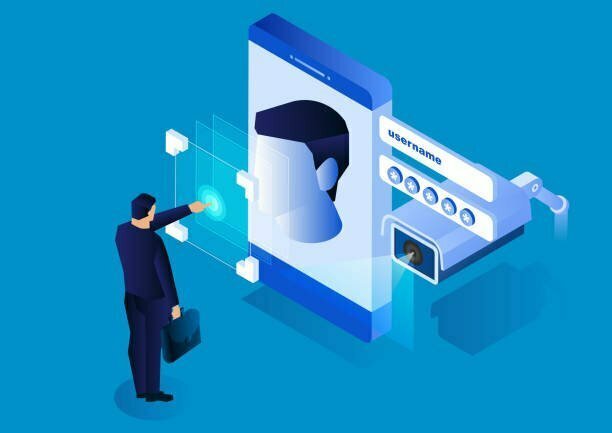Facial recognition biometric technology is improving all the time, and many of us use biometric innovations like face recognition every day. However, as technology evolves, it’s important to keep in mind that security concerns are constantly evolving.
As technology advances, hackers grow more sophisticated and inventive in their methods of stealing personal information. They adopt different procedures and learn how to operate around them, which means that, despite the availability of more complex biometric technology, businesses that use them are still at risk. With news of security breaches affecting some of the world’s largest corporations on a regular basis, it’s critical to consider what more you can do to ensure that you and your consumers are safe from fraudsters.
Biometric face authentication
Do you believe your biometric Facial recognition is safe from malicious actors? Reconsider your position. Biometric face spoofing scams have grown in popularity over the last few years all around the world. Hackers are trying all they can nowadays to get around facial identification systems, from printable pictures to 3D masks. They also take photographs from social networking sites like Facebook and try to fool Facial recognition software with them.
Security firms now must raise their efforts as security vulnerabilities become more frequent. They’re doing so by improving security mechanisms while making solutions simple for consumers to use. Liveness detection for face authentication is one of the more popular skills. However, in order to verify liveness, the customer must gaze into the smartphone and do actions such as moving left, right, blinking, or even zooming in and out. This strategy creates a negative customer experience and can result in a high rate of onboarding desertion. A more reliable way is to use a technique that does not involve any of the preceding moves, but rather simply “point and shoot.” Passive liveness detecting is the term for this.
Below is a deeper examination of passive liveness detection, how it differentiates from active liveness detection, and why it is this big a deal for an organization.
What is Passive Liveness?
Passive liveness identification is a novel, innovative means of making sure a face provided to a face Facial recognition software is alive. It is an AI (artificial intelligence) driven technique. Customers are not informed that they are getting evaluated via passive liveness, and they are not forced to undertake any extra mobility activities.
Passive liveness detection works in the backdrop, with systems identifying and evaluating components of a picture that indicate its features, such as hair, borders, structure, coverings or cuttings, and any other indicators that a fake depiction of a person’s face is being used.
Because the procedure does not warn the customer in any manner, scam artists will have a harder time figuring out how to get around this system.
Difference Between Active Liveness and Passive Liveness
Facial recognition liveness detection is a technique for determining whether an actual Facial recognition, rather than 3D masks, clip, high-resolution image, or cut-out pictures, is being displayed to live Facial recognition software. People occasionally try to fool the Facial recognition procedure into believing it sees a person’s face, and biometric information is now easily accessible through social media networks or Google searches.
This possible problem can be avoid by using liveness detection. It provides a technique to tell if a face is actually ‘alive’ or if it was produce by cybercriminals. Simply said, this technology detects the difference between actual and fake faces.
Active and passive liveness identification are the two kinds of liveness detection. Individuals must conduct essential actions to verify they are living in the aggressive role of this system. This necessitates the use of video rather than still images, as well as extremely inconvenient. Consumer experiences such as tilting your head to the sides. To establish that the smartphone is active, some providers may ask you to wink or pan in and out. Passive liveness detection, on the other side, does not involve any user interaction and provides a considerably more pleasant customer experience.
Benefits of Passive Liveness
Biometrics firms these days can provide passive liveness features that comply with ISO 30107-3. The market norms for Presentation Attack Detection, or PAD, are outlined in these regulations. These are the upsides of adopting passive liveness detection:
Quick and Easy
The first advantage is that it is fast and simple. It’s ideal for bringing on new clients. Consumers who need to register to manage their accounts digitally. Or through a mobile application, for instance, can do so swiftly. When it comes to Facial recognition, a positive consumer experience is crucial.
Frictionless
The consumers complete the register or login procedure fast as it is simple and quick. Companies do not have to worry about customer desertion and ensure a positive customer experience.
No Movement
There is no need for camera movements like camera pans, zooms, blinking, head tilting, or other active precautions.
Bottomline
The Covid-19 outbreak has increased the use of electronic identity verification by 20% as the epidemic affects onboarding and authentication processes. This indicates it’s more crucial than ever to provide your consumers with reliable and easy Facial recognition software. While also eliminating spoof attacks and concentrating on a great user experience.
